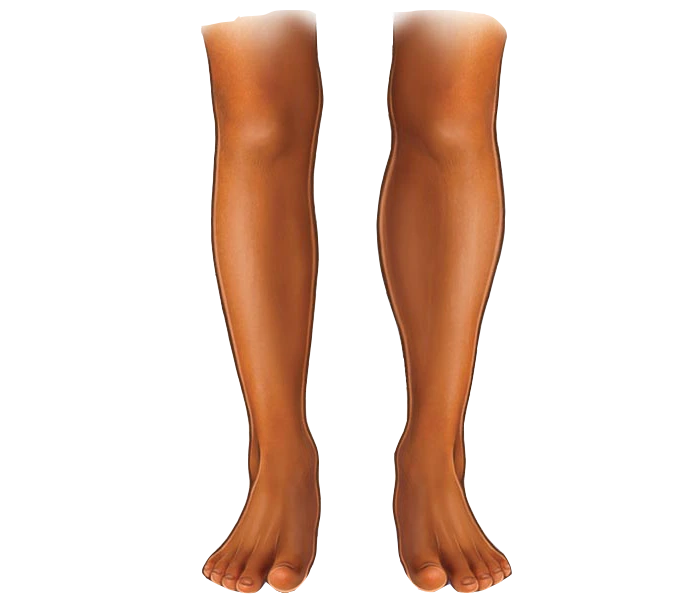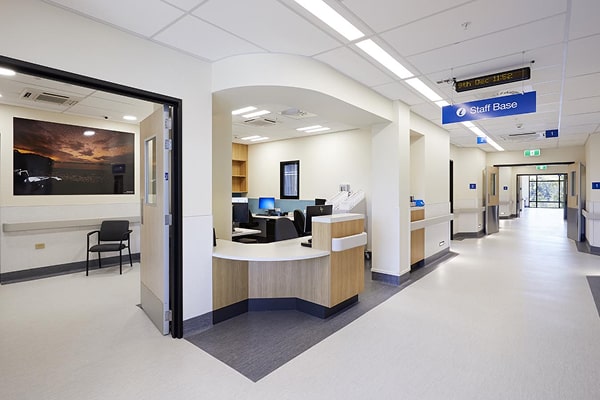Calf Augmentation Surgery: A Modern Treatment for Aesthetics and Fitness
Calf augmentation surgery is a cosmetic procedure aimed at increasing the volume and proportion of the calf muscles. This surgery can help individuals who naturally have slim calves, or those who experience muscular weakness in this area due to genetic factors or physical injuries, to achieve a more attractive and proportionate appearance.
In this article, we provide a comprehensive and professional overview of calf augmentation surgery, discussing its benefits, procedure, recovery process, and important considerations.
Why Calf Augmentation Surgery?
The calf muscles play a vital role in the body’s functionality. Not only do they assist in leg movement and maintaining balance, but they also significantly contribute to body aesthetics and proportion. Many individuals feel dissatisfied with their appearance due to asymmetry or weakness in their calf muscles. Calf augmentation surgery has become an effective solution for those wishing to have fuller and more muscular calves.
The benefits of this surgery include the following:
• Increased calf volume: For individuals with slim calves, this surgery can effectively enhance the size and shape of the calf muscles.
• Improved body proportion: For those seeking to improve their body appearance and achieve better harmony between their body parts, calf augmentation surgery can make a significant difference.
• Boosted self-confidence: Having well-proportioned calves can substantially increase a person’s confidence, especially in situations where their body is on display.
Steps of Calf Augmentation Surgery
This surgery is typically performed using silicone implants or muscle grafting techniques. Below are the main steps involved in the procedure:
- Initial Consultation and Medical Assessment
Before the surgery, the patient must undergo a comprehensive consultation with a specialized cosmetic or plastic surgeon. During this stage, the doctor assesses the patient’s physical condition and discusses the surgical goals. The doctor may also conduct medical tests to evaluate the patient’s overall health. - Choosing the Surgery Type and Implant Method
Depending on the patient’s needs and the doctor’s advice, two different methods may be used for calf augmentation:- Silicone Implants: In this method, silicone implants of the desired size and shape are placed under the calf muscles to enhance their volume and shape.
- Muscle Grafting: This technique involves using the patient’s own tissue or donor tissue to graft a new muscle onto the calf muscles.
- The Surgery
Calf augmentation surgery is typically performed under general anesthesia or local anesthesia. The surgeon makes small incisions in the calf area and carefully inserts the implants. Depending on the method, the surgery can take from 1 to 2 hours. - Post-Surgery Care
After the surgery, patients are usually monitored in the hospital for several hours. In the initial days after the procedure, there may be swelling, bruising, and pain, which can be alleviated with prescribed medications and special care. The doctor may also prescribe antibiotics to prevent infection.
Recovery Process and Important Considerations
The recovery period for calf augmentation surgery is usually short and free of serious complications, but it requires precise care:
• Rest and Avoidance of Intense Activities: In the first few days post-surgery, patients should refrain from intense activities such as aerobics and lifting heavy objects.
• Proper Diet: Adequate nutrition and sufficient protein intake are essential to aid in the healing process and the repair of damaged tissues.
• Regular Check-ups: After the surgery, patients should regularly visit their doctor to monitor the surgery’s progress and avoid any potential issues.
Key Points in Choosing a Surgeon and Medical Facility
Choosing the right surgeon and medical facility is crucial for successful calf augmentation surgery. Some key points in selecting a medical center and specialist include:
• Surgeon’s Expertise and Experience: The surgeon should have sufficient experience in body aesthetic surgeries, particularly calf augmentation.
• Reputable and Equipped Centers: Hospitals and clinics should have advanced equipment and a safe environment for performing the surgery.
• Patient Reviews and Experiences: Reading reviews and experiences of previous patients can help in making an informed decision.
Conclusion
Calf augmentation surgery is an effective option for those looking to improve the shape and volume of their calves. This surgery can help individuals dissatisfied with the appearance of their calves achieve the body proportion they desire, boosting their self-confidence. By selecting an experienced surgeon and utilizing advanced equipment, the results of this surgery can be highly successful and long-lasting.
If you are considering calf muscle augmentation, consult with experienced specialists and surgeons in this field to make the best decision for yourself and achieve the body you desire.
The Role of Nutrition in Calf Augmentation Surgery
Proper and balanced nutrition plays a crucial role in the calf augmentation surgery process. This procedure, which aims to increase the volume and proportion of the calf muscles, requires not only the skill of the surgeon and advanced equipment but also an appropriate diet to accelerate recovery and achieve optimal results. In this article, we will explore the role of nutrition in calf augmentation surgery and examine its significance during different stages of treatment.
The Importance of Nutrition Before Surgery
Nutrition before surgery plays a vital role in preparing the body for the procedure and improving the healing process. A well-balanced diet can strengthen the immune system, reduce the risk of infection, and aid in faster tissue repair. Some nutrients that are important during this phase of treatment include:
- Proteins: Proteins are essential for tissue repair and muscle building. Before surgery, consuming high-quality proteins such as lean meats, fish, eggs, and plant-based sources like beans and lentils can help the body better prepare for the surgery.
• Vitamin C: This vitamin acts as a powerful antioxidant and helps enhance the immune system and improve wound healing. It is recommended to consume foods rich in vitamin C, such as citrus fruits, bell peppers, and kiwis.
• Iron: Iron helps in the production of hemoglobin, and since surgery may lead to blood loss, consuming iron-rich foods such as red meat, chicken, and spinach can help prevent iron deficiency and improve the recovery process.
• Healthy Fats: Unsaturated fats, like those found in olive oil, avocados, and fatty fish, help reduce inflammation and improve the body’s overall functioning.
The Role of Nutrition in Post-Surgery Recovery
After calf augmentation surgery, the body requires specific nutrition to accelerate muscle and tissue repair. Proper nutrition during this phase helps speed up recovery and reduces the risk of complications. Some important dietary tips during recovery include:
- Increased Protein Intake: To rebuild and strengthen the calf muscles after surgery, the body needs more protein. Consuming protein sources like lean meats, eggs, dairy products, and plant-based protein sources helps repair tissues more quickly.
• Adequate Hydration: Keeping the body hydrated after surgery is crucial. Water helps reduce swelling, maintain proper kidney function, and prevent complications after surgery.
• Essential Micronutrients (Vitamins and Minerals): Consuming B vitamins, vitamin D, calcium, and magnesium helps repair tissues and strengthens bones and muscles. These micronutrients can be found in food sources such as leafy greens, nuts, fish, and dairy products.
• Limiting Sodium (Salt) Intake: Excessive salt consumption can increase swelling and hinder the healing process. Therefore, it is advisable for patients to avoid high-sodium foods after surgery.
Beneficial Supplements for Calf Augmentation Surgery
In some cases, patients may need specific supplements to speed up the healing process. Some supplements that can be beneficial during recovery include:
- Collagen: Collagen helps rebuild and repair tissues and plays an important role in the recovery process after surgery.
• Glutamine: This amino acid helps strengthen the immune system and reduce inflammation.
• Multivitamins: Taking multivitamins can be helpful to provide nutrients that may be lacking in the daily diet.
• Omega-3 Fatty Acids: These fatty acids help reduce inflammation and improve overall body health.
Nutritional Recommendations for Faster Calf Muscle Recovery
To accelerate calf muscle regeneration and achieve better results from surgery, certain dietary tips are essential:
- Balanced Diet: A balanced diet with sufficient protein, healthy fats, and complex carbohydrates is necessary to provide the energy needed for tissue repair and muscle building.
• Appropriate Exercise and Physical Activity: After the initial recovery period, light exercises and stretching for the calf muscles can help strengthen the muscles and maintain the surgical results.
• Antioxidant-Rich Foods: Antioxidants help reduce inflammation and promote faster recovery from surgical damage. Foods like raspberries, blueberries, and dark-colored vegetables are rich in antioxidants.
Conclusion
Proper nutrition before and after calf augmentation surgery not only helps speed up the recovery process but also plays a significant role in maintaining muscle health and improving surgical outcomes. By consuming the right nutrients, the body can better cope with the challenges of surgery and accelerate the process of muscle and tissue regeneration. Therefore, collaborating with a nutrition consultant alongside the surgeon to establish a tailored diet plan before and after surgery can significantly increase the success of the surgery and patient satisfaction.













